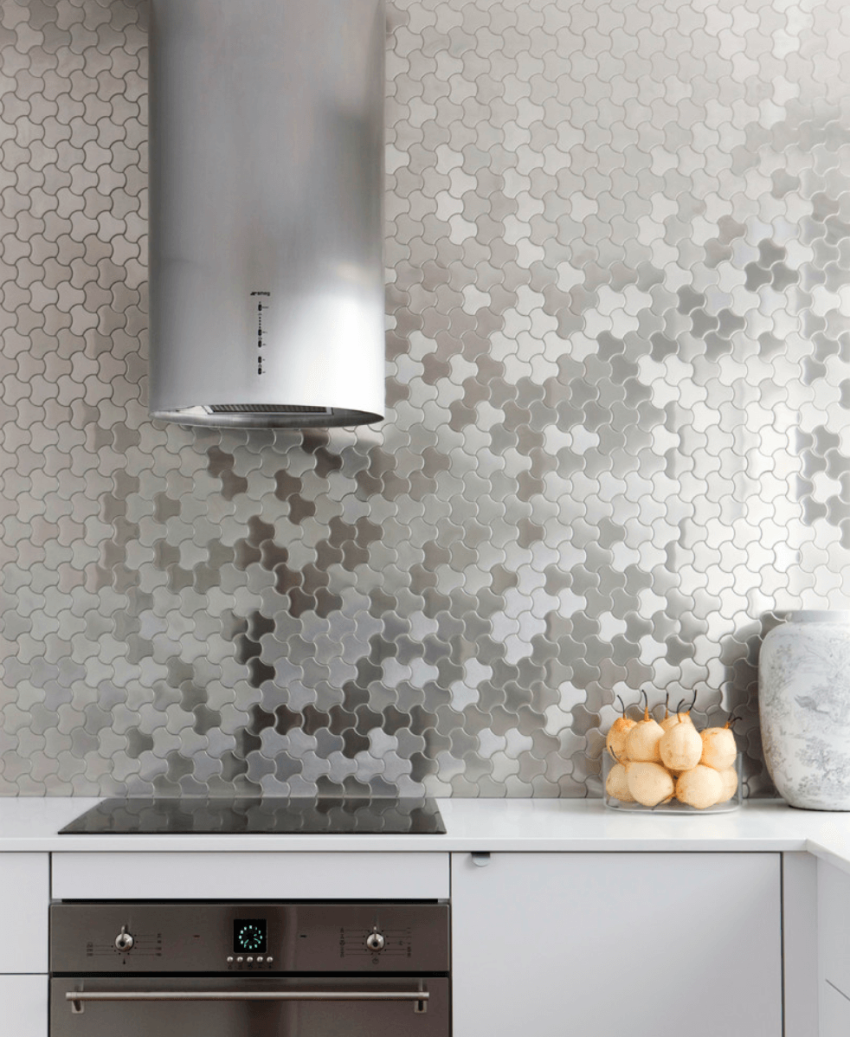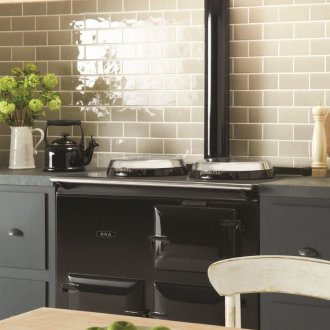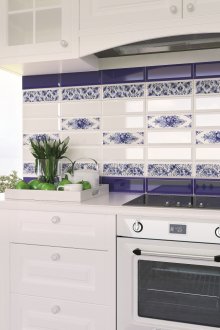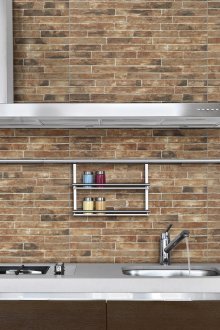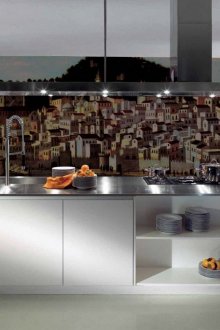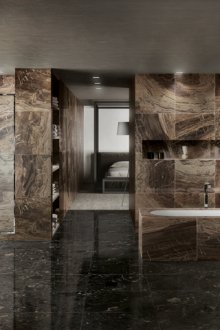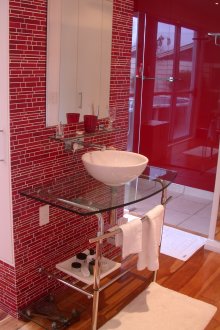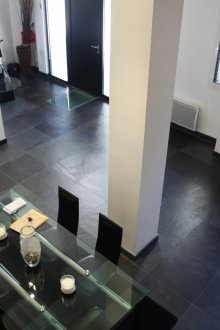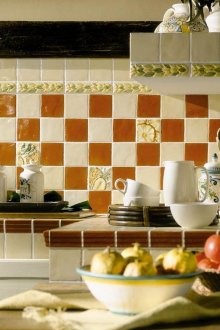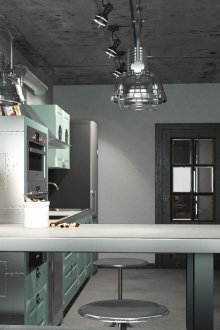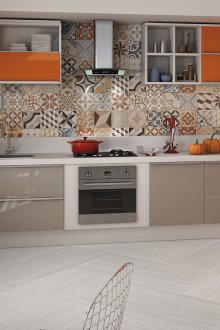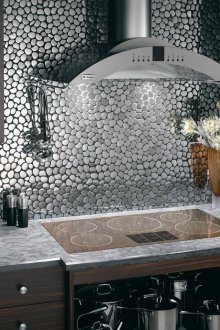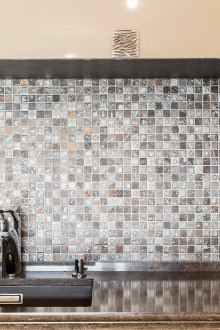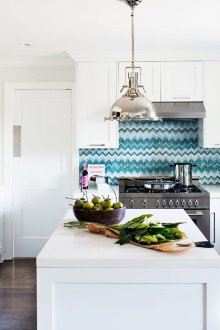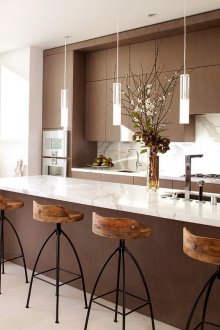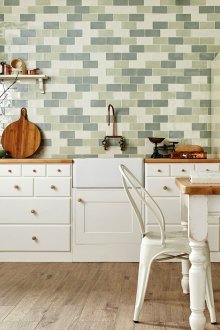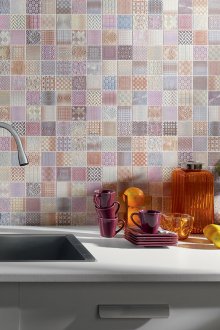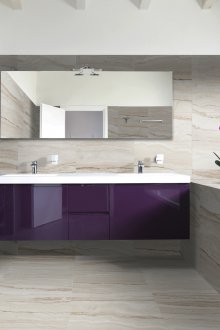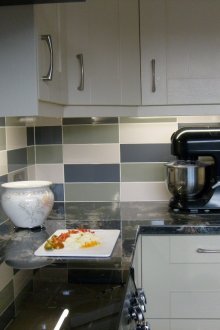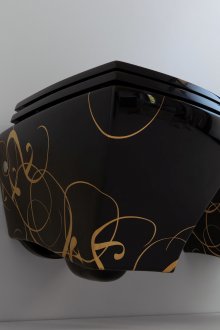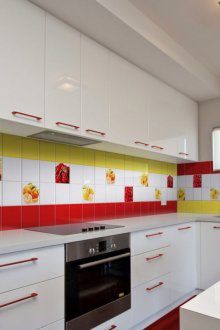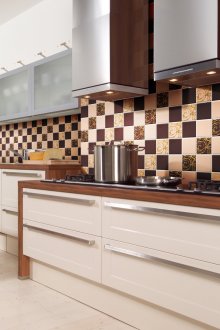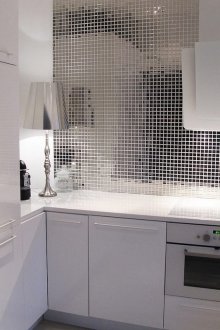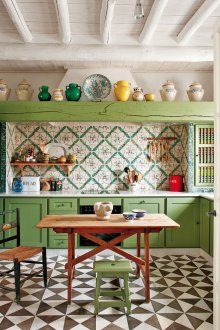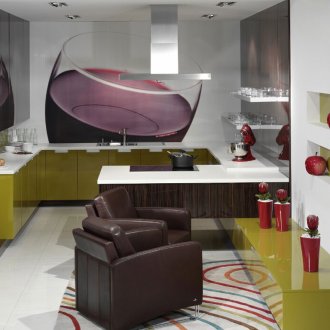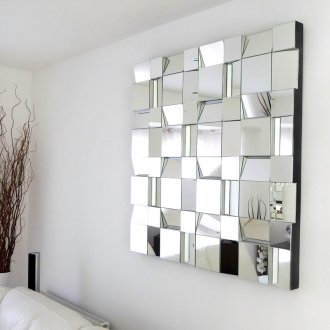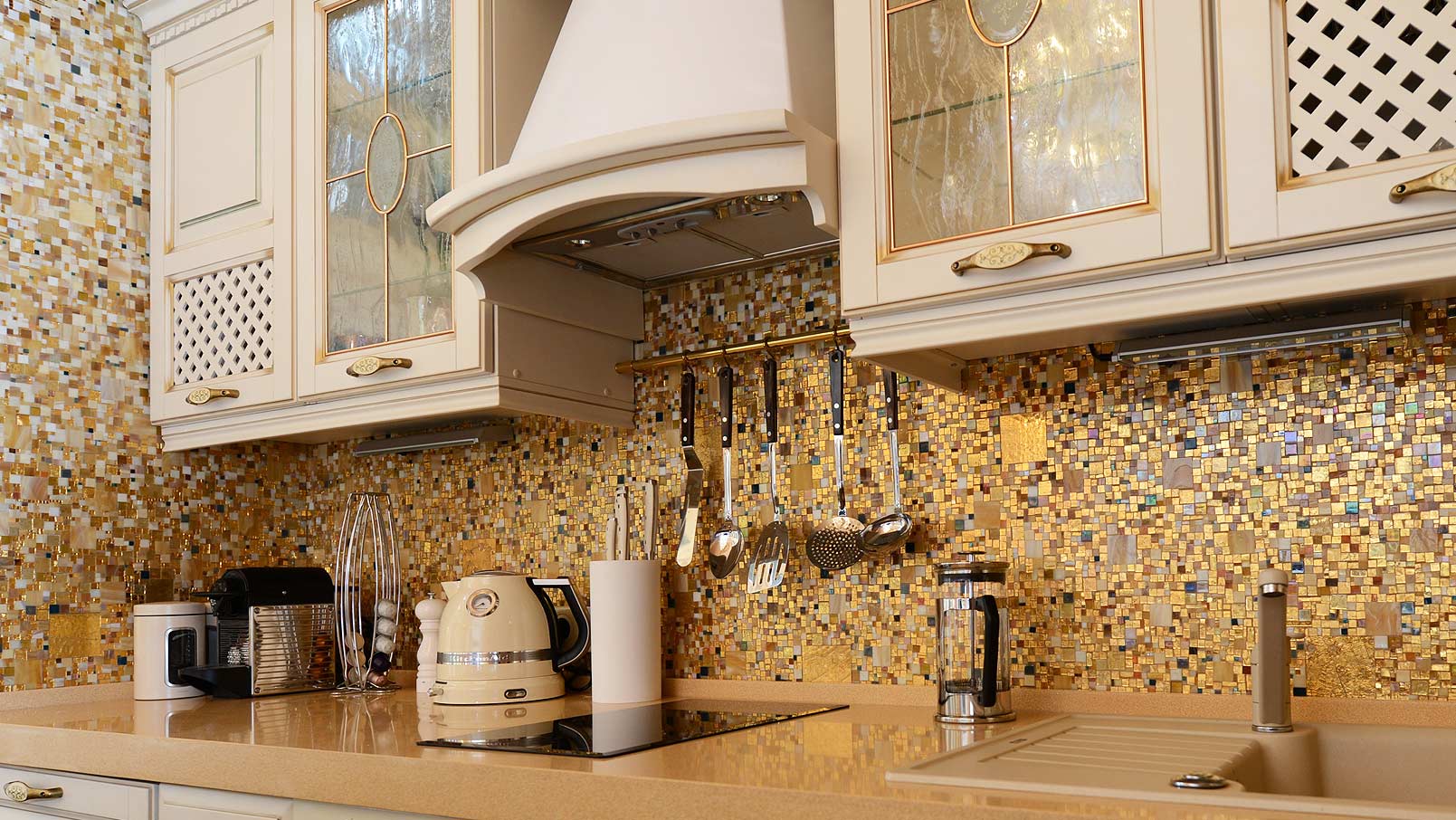Tiles for the apron of the kitchen: a variety of textures and materials (36 photos)
Content
Using the apron of the working area, we decorate the kitchen and protect it from pollution, therefore it is advisable to use high-quality, reliable, attractive materials for the manufacture of the apron. Most often, tiles are used to design an apron, which is distinguished by an attractive design, but it is extremely important that the material, in addition to aesthetic appeal, be durable and resistant to the negative influence of external factors.
Today, manufacturers offer facing material in a wide variety of formats. The most common size is a square tile with 10x10 parameters. However, in addition to square tiles, you can meet other various options: rectangular models of various parameters; and diamond-shaped tiles will help to bring originality to the interior.
The material that will be used to design a kitchen apron made of tiles has high demands. The technical specifications of the tiles must be excellent. Today, manufacturers are trying to produce this material with improved technical parameters.
In order to care for the material does not lead to additional difficulties, it is necessary to purchase it, guided by hygiene requirements. Note that embossed surfaces tend to accumulate dirt and dust. Such a surface is not easy to care for. In this regard, it is better to choose matte and glossy surfaces.
Tile Design: Popular Options
As for the design of the tile, it has a wide variety of choices. When choosing a tile, pay attention to how it harmonizes with the style decision of the interior. The material should be combined with walls, ceiling, furniture. It will be easy to choose a beautiful facing material, the main thing is to take into account the style of the room, its dimensions and individual preferences.
A universal kitchen solution is a white finish with a variety of decor. She fills the space with light and freshness. From the white tile you can get a universal option, because white with gloss or dull color is suitable for any interior. Light tiles, if desired, can be complemented by a variety of contrasting inserts. In addition, light material can be decorated with vinyl stickers.
For bright and custom solutions, colorful shades are optimal. If the furniture is made to match the color of the tree, then the apron should be matched to it in tone. It is not necessary to accurately repeat the tone of the furniture; the finish may vary slightly.
Popular apron materials
The use of tiles for an apron is not only a certain stereotype, but a functional, most practical solution. The variety of this material is amazing, so consumers have a question how to choose the best option. Consider the most popular types of tiles:
- Ceramic tiles for the kitchen on the apron. This option for designing a kitchen apron is the most common. The fact is that ceramics are well washed from contaminants, easy to assemble, and durable. The color schemes are diverse: from classic brown, gray to rich yellow, red, etc. Ceramic kitchen apron is durable.
- Tile. Tile has excellent performance. It is distinguished by its ability to resist physical and chemical effects well, and is easy to care for.
- Tile-mosaic for the kitchen on the apron. Using small fragments of a mosaic, it is possible to design both rectilinear and curved surfaces.
- Tile "hog". This material is distinguished by the presence of elongated shapes and proportions. If you decide to use such material, you can get an interesting, embossed surface that will give the interior exclusivity.
- Brick tile. This design is perfect for both classic and modern interior.
- Spanish tile. This type of tile material in the consumer market is in high demand. It looks original, catchy and luxurious. The material is high quality and has a high level of strength.
- Glass tile. Practical and attractive, resistant to aggressive detergents, easy to clean.
- Patchwork tile. It is made on the basis of this type of decorative art, when the whole color composition is obtained from individual parts. The layout of the tiles may be different. Today you can buy tiles of this kind with a wide variety of motifs (lace, cage, zigzag, etc.).
Having studied all the options presented, you can easily choose the most optimal one. If you do not know which size to choose, then choose the 10x10 format. This tile format is universal, as it helps to avoid trimming the material. Especially this tile size is suitable for a small kitchen, as it makes it possible to make the room larger. This format is easily combined with other elements in order to create panels.
The main criteria for choosing tiles for an apron
Before you go to the store, you must first determine the height and width of the future apron. Accurate data is necessary so that when laying, you do not encounter the fact that the material will have to be severely trimmed. The standard height of the apron, as a rule, is 50-60 centimeters. Please note that the exact parameters of the tiles differ from one manufacturer to another. This point must be taken into account when calculating the amount of material needed.
When buying kitchen tiles, see if there is a protective coating. If such a surface is available, then during the cleaning process it will be possible to use potent agents.
It should be remembered that in different batches the material may have a different tone. The fact is that when firing it is extremely difficult to get the same result. In this regard, if you purchase material for the manufacture of an apron, then it must be taken with a margin. In this case, if during installation the tile on the apron is accidentally damaged, you will not have to look for a similar tone.
Features laying tiles for an apron
Ideal if the border of the apron matches the border of the furniture. In practice, implementing this rule does not always work. This is because the lining, as a rule, is performed under the purchased kitchen set.
It is rational to lay the material in such a way that from the top and bottom of the apron slightly go beyond the furniture. In this case, the design will be neat and tidy.
When using furniture with standard parameters, the distance from the floor to the apron is 85 centimeters.
You can lay tiles in a variety of ways. Before work, you will need to remove the old material, if any, to smooth the surface of the wall. Then mark the boundaries for future installation, fix a block or a metal profile on the wall.
Next, the wall is treated with diluted adhesive, after which the laying of the first row begins. Flatness is checked by level. Plastic crosses are mounted between the materials. So fit all the rows.
According to the results of the work, one should not forget to get rid of the glue residue. The apron for the kitchen dries during the day. After the surface dries, you can pull out all the crosses. All seams are carefully grouted. When the grout dries, the surface of the apron is wiped.
Properly laid apron tile will last a long time and increase the comfort and functionality of the work area. If you do not have the necessary experience, then laying the tiles is best left to professionals.






